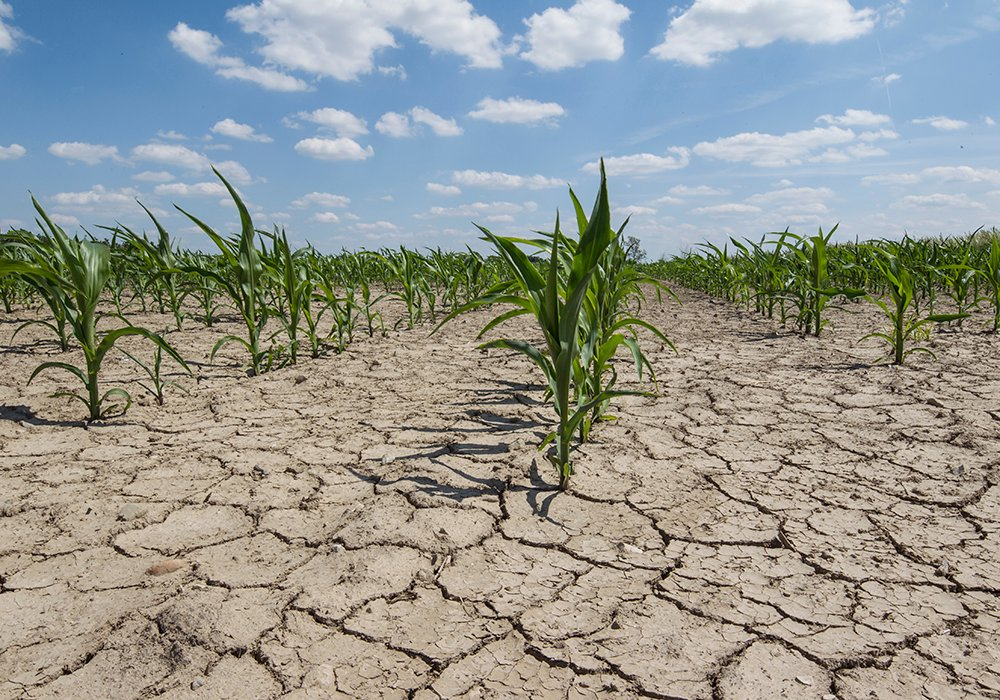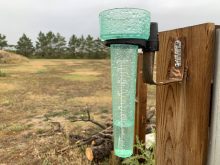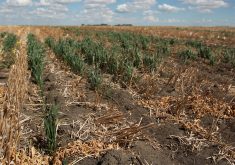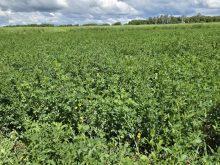Saskatchewan might be known as one of Canada’s agricultural breadbaskets, but the province also hosts a cornucopia of climate scientists researching the interconnections of the ag sector with the weather, especially drought.
During his talk to the University of Saskatchewan’s Science, Research and Society Club earlier this month, University of Regina climate scientist David Sauchyn said it’s not necessary to go much further than Saskatoon to find the best research in the field.
The science of long-term weather patterns across the prairie provinces finds a profound consensus among those studying the topic — the climate is warming due to human influence.
Read Also

Drones now used to assess wildlife crop damage in Saskatchewan
Wildlife damage in Saskatchewan crops is now assessed by drones and artificial intelligence.
Citing the reports from the Intergovernmental Panel on Climate Change compiled by thousands of scientists studying the issue, Sauchyn said, “it’s unequivocal that we’ve changed the climate.”
That doesn’t mean their conclusions will be 100 percent accurate, “but this is as close as you get to certainty,” he added.
If those predictions bear out, the world will see more droughts and more severe droughts.
The perceptions of the 2021 drought must be taken in context with the climate history of the Prairies, added Sauchyn.
“It’s human nature that we tend to exaggerate current events,” said Sauchyn, citing examples of times of excess moisture in the 2010s, as well as last year’s drought, which were described as “unprecedented.”
By extrapolating historical weather data from looking at tree rings from both recent and old samples, more than a millennia of moisture levels can be researched along the South Saskatchewan River.
“The trees predict the droughts that we know. Therefore, we expect the trees will be able to predict the droughts we don’t know,” said Sauchyn. “There is a mathematical relationship between recorded water levels and tree rings.”
That data shows southern Alberta and Saskatchewan have dealt with drought since the year 888.
There are also historic recordings of the North Saskatchewan River almost completely drying up in the 1790s.
“The scientific message is, these kinds of droughts will reoccur,” said Sauchyn, adding that in the context of today’s world, “when they do, it’ll be in a warmer climate.”
The historical record has reflected droughts that can last a decade or longer on the Prairies, which Sauchyn said will be devastating to the agricultural economy and be exacerbated by consistent year-over-year global temperature increases since the late 1970s.
“There has been much more warming in Western Canada — especially northwestern Canada — and especially in winter,” Sauchyn said of the temperature trend.
Using climate data stretching back to 1900 in Saskatoon, he highlighted the average mean low temperature in the city going from – 22 C to -18 C over that time period.
“That’s a huge increase in minimum temperature,” he said. “To put that in perspective, about 100,000 years ago, the temperature of the world changed by four degrees but it took thousands of years.”
Adding to the issues is the concept that average weather conditions are being skewed by the extremes in any given year in recent times.
“So high amounts of precipitation and low amounts of precipitation becomes more likely as our climate warms,” said Sauchyn.
Despite there being abundant scientific data reflecting climate change, Sauchyn said research on what Canadians think varies.
In a survey by the University of Montreal that asked the question, “is the Earth getting warmer,” the average national response is 83 percent agree.
“In Alberta and much of Saskatchewan, it’s closer to 50 percent,” Sauchyn said.
He added that it’s not that those on the Prairies don’t understand. Farmers and ranchers are on the land every day and exposed to all sorts of weather extremes upon which they base their perceptions, said Sauchyn.
“They trust their personal experience,” he said. “There is an emphasis on natural cycles and when you talk to producers, a lot of them say, ‘ I haven’t seen a lot of climate change, what I see is a lot of natural variability.’ ”
While it’s a valid perspective because Western Canada has some of the most variable weather conditions on the planet, Sauchyn said the long-term consequence will be an inability to adapt to global climate change if there isn’t a belief that it exists.
















